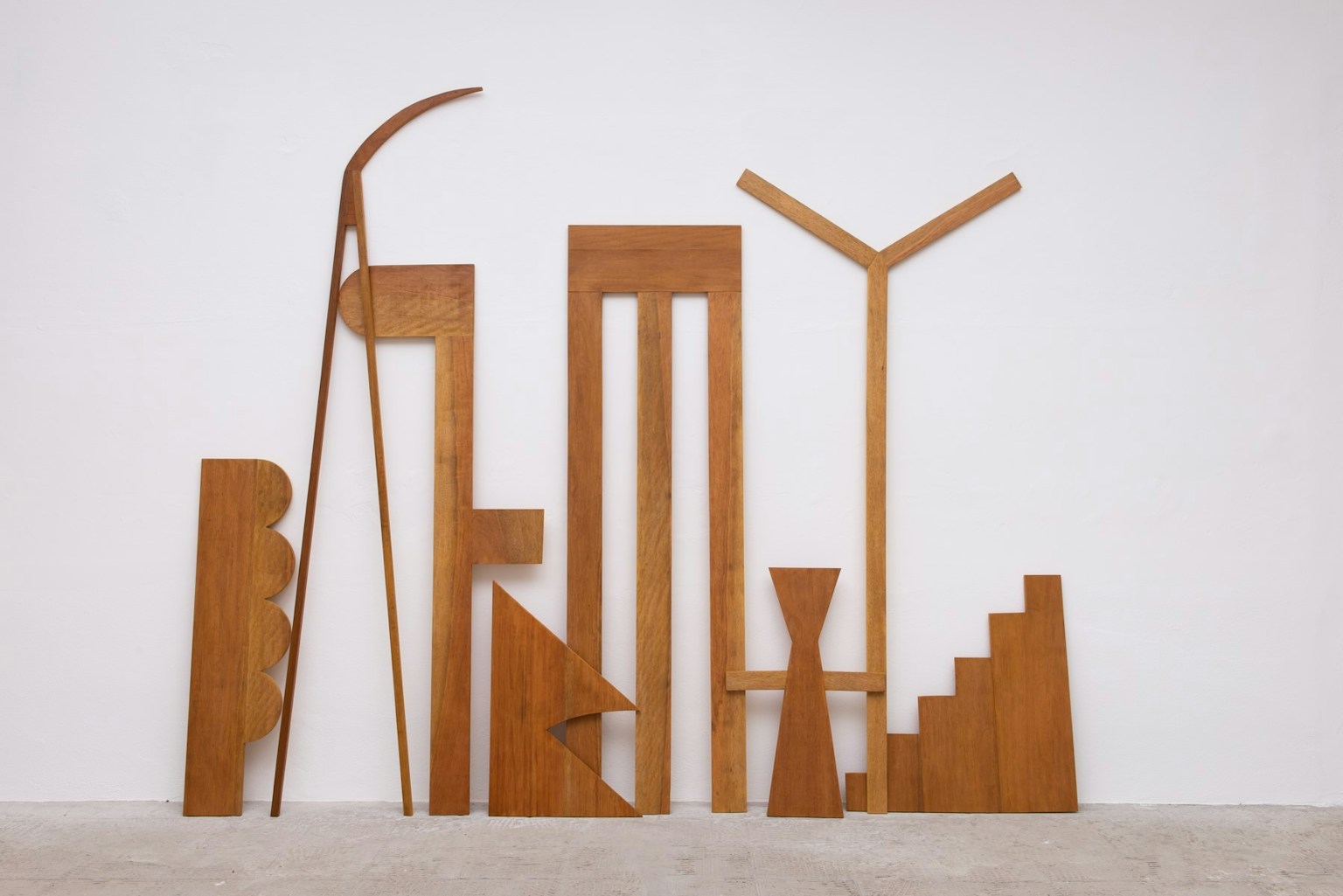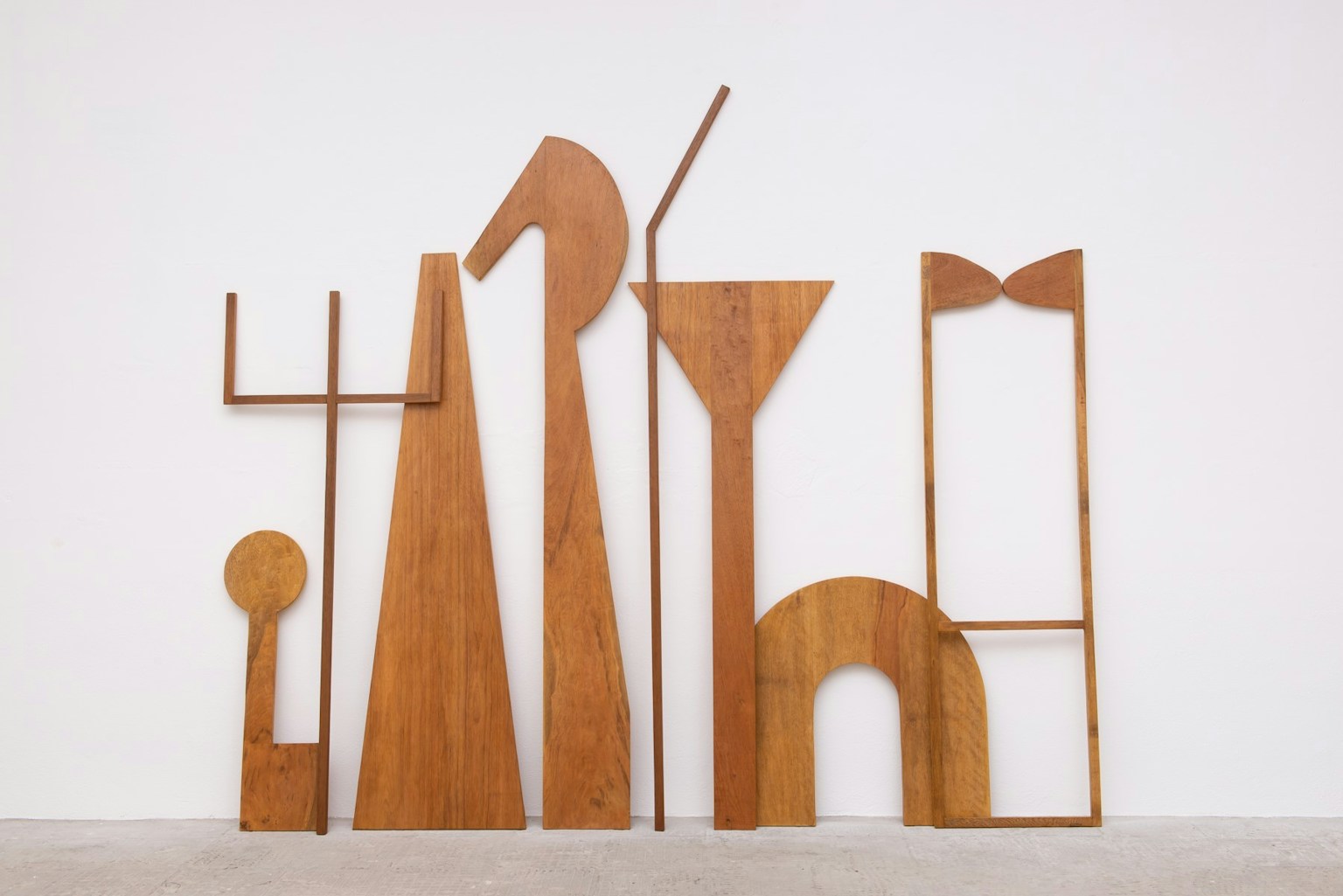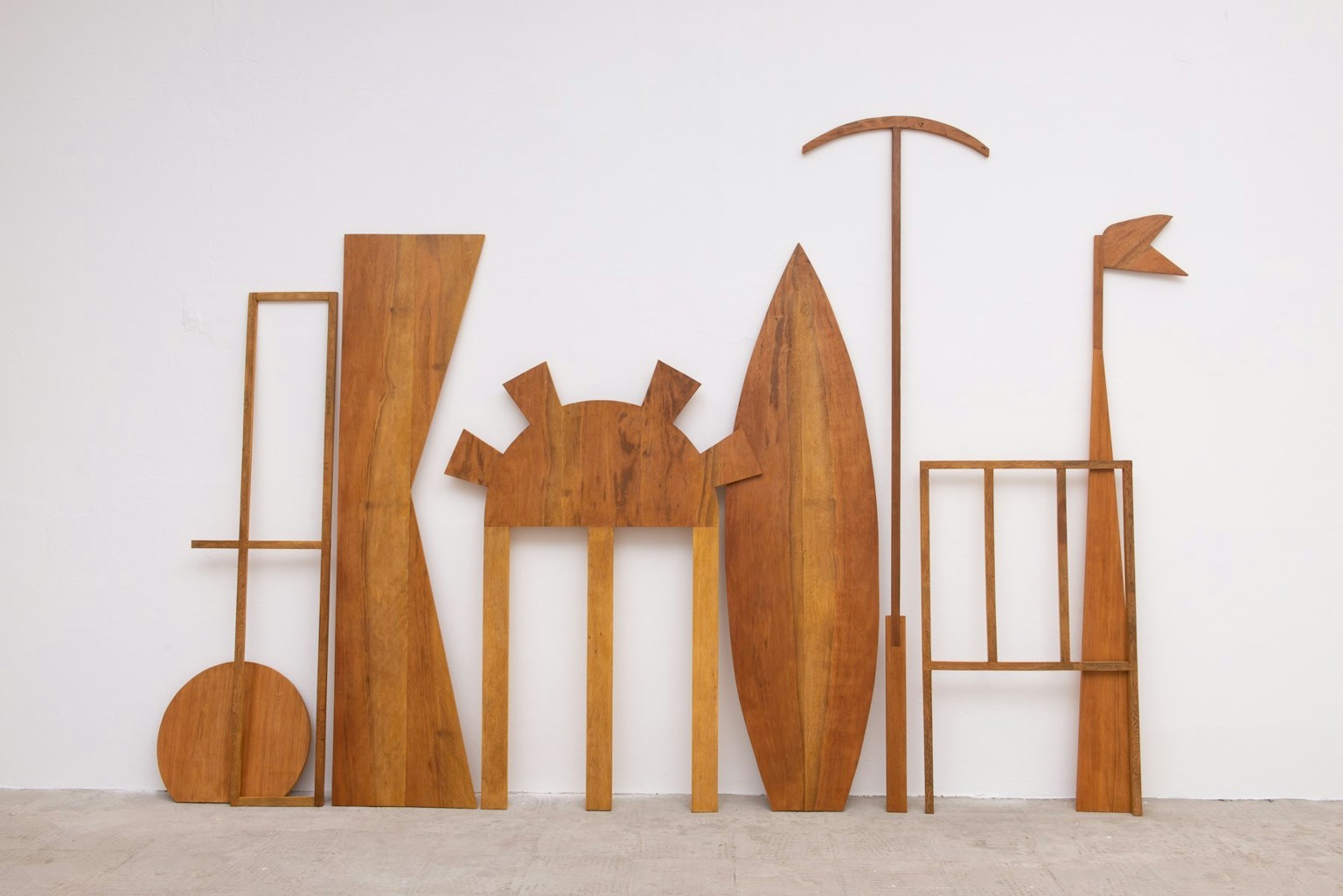Ana Mazzei | Templo 1
2020
wood, varnish
unique
280 x 360 x 10 cm
Ana Mazzei | Templo I
2020
wood, varnish
unique
250 x 320 x 10 cm
Ana Mazzei | Templo - Face Oeste
2020
wood, varnish
unique
249 x 360 x 10 cm
The Friends of S.M.A.K. are delighted to announce the acquisition of the work by Brazilian artist Ana Mazzei (°1980).
Mazzei lives and works in São Paulo.
For Ana Mazzei, art, architecture and landscapes construct in themselves a fiction that connects them, resulting in installations, sets and objects.
Some work on a smaller scale, such as the series of installations arranged on the floor and formed by groups of small forms made of felt, concrete or wood. Similar to the architectural models of ancient cities, amphitheatres or monuments. Beyond the formalistic exercises, these floor objects evoke unidentified stories that suggest hidden and impenetrable archetypal structures - they are like pieces and fragments of myths, lives and fictions that are represented in paintings, videos, sculptures and installations.
Her works have recently been featured in major institutional exhibitions at SESC Pompéia (São Paulo), MASP (São Paulo), Padiglione d'Arte Contemporanea (Milan), Bienal Internacional de Cuenca, Bienal Internacional de São Paulo, House of Egorn (Berlin), Contemporary Art Center (Vilnius, Lithuania), Instituto Tomie Ohtake (São Paulo), Parque Lage (Rio de Janeiro), among others.
The works of Ana Mazzei are part of important institutional collections, such as: Nouveau Musée National (Monaco), Sammlung Philara Collection (Düsseldorf, Germany), Centre National des Arts Plastiques (Paris, France), Glasgow International, (Scotland), MASP - São Paulo's Art Museum (São Paulo, Brazil), Brazilian Art Museum (FAAP, São Paulo) and recently the Friends of S.M.A.K. collection.
Ana Mazzei on her work:
"The notion of spectatorship is at the centre of my work. For this reason, concepts such as display, proportion and scale are integral to how my work is constructed, often converging into installations.
The Temple is an installation composed of 24 pieces carefully designed and cut in solid wood, in this case Cedar, chosen for the quality of the wood's grain and for the color that can be different depending on its cut. Rather than being conceived as autonomous work, the Temple was thought to embrace the notion of theatricality, staged as an intermediary between the idea that the spectator has about a temple and an imaginary ‘other space’ staged in order to establish specific relationships between bodies and space.
The installation is accompanied by an audio piece, which reveals a degree of abstraction that takes us to an environment of extrasensory experience, only possible through music. I think about the different configurations that this set of pieces can reach, molding itself depending on the space and guaranteeing its presence in multiple assemblies.
In my practice, site-responsiveness inevitably implies a degree of improvisation: although always using drawing as a starting point in my exhibition-making process, the installation stage remains open to be choreographed according to different architectural conditions.
There is also this visual vocabulary that I am always looking for that combines a strong geometric inclination with sensibility that may betray a nod to the constructive legacy of Brazil’s late modernist movements, namely the Concretist and Neo-Concretist production of the 1950s. However, in contrast with the formalist orthodoxy of the form, our Temple is impregnated with symbolic meaning."

















